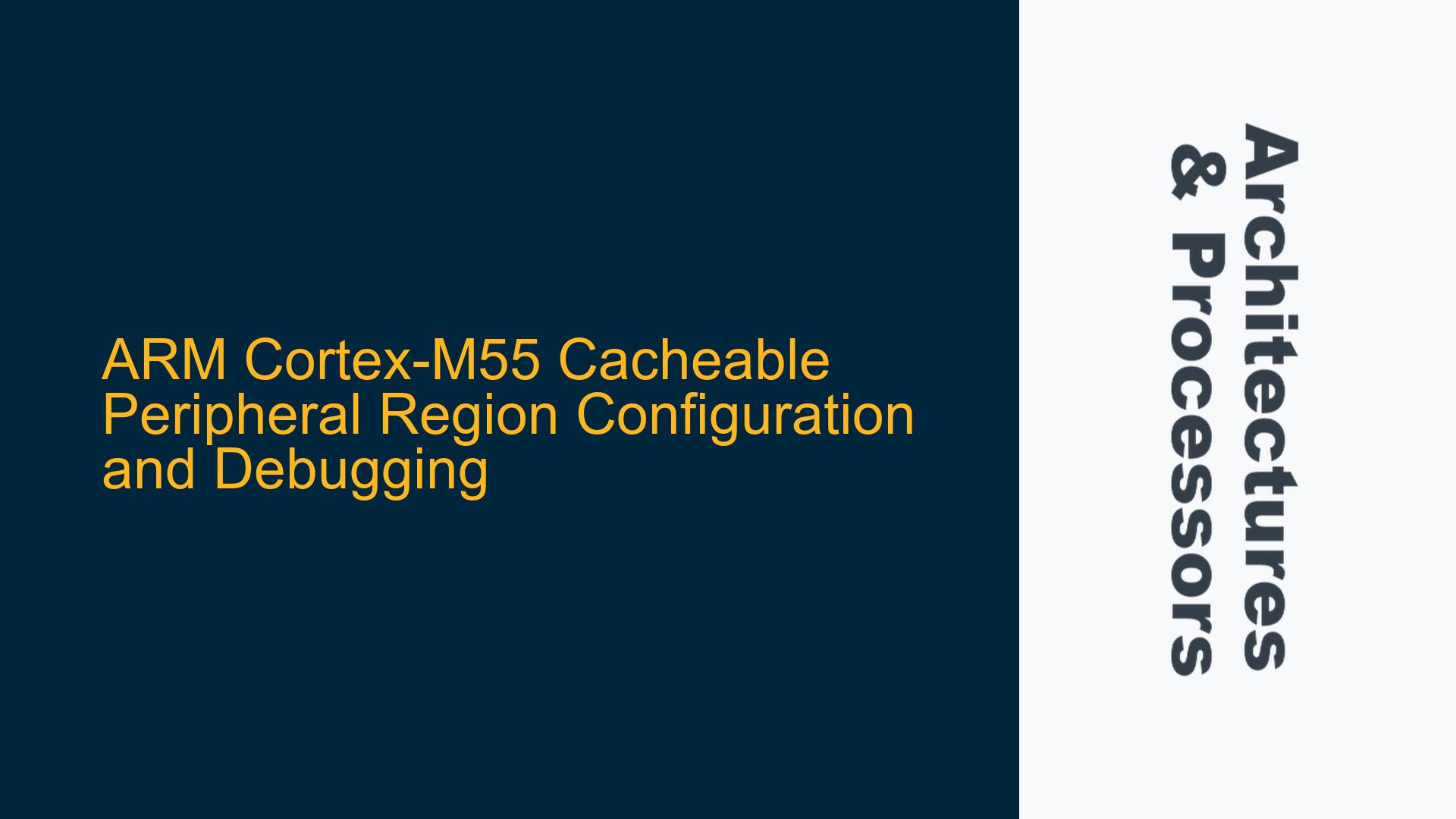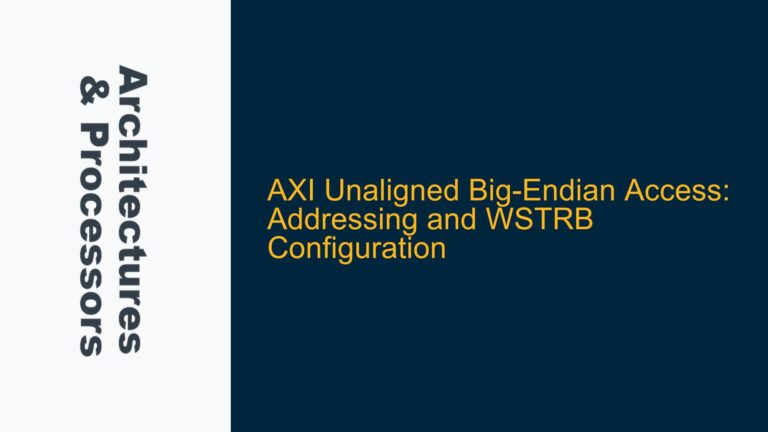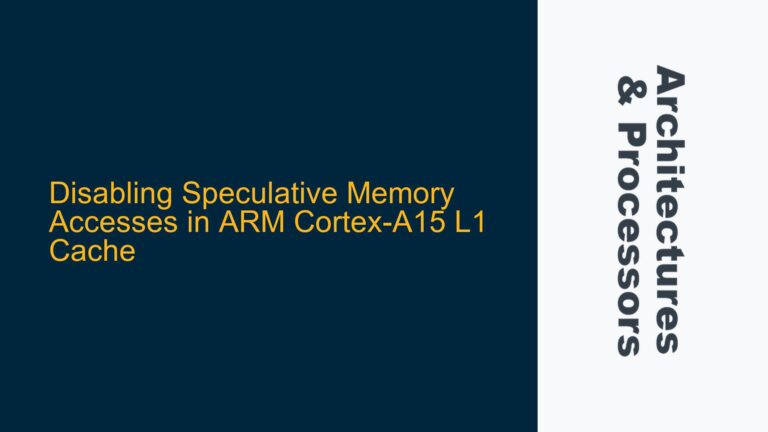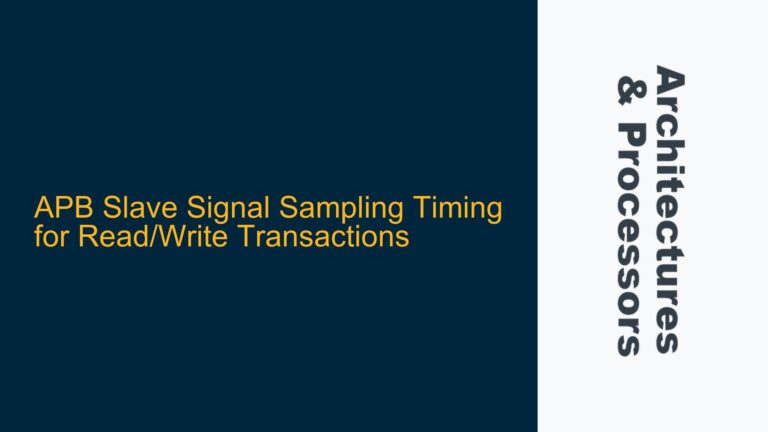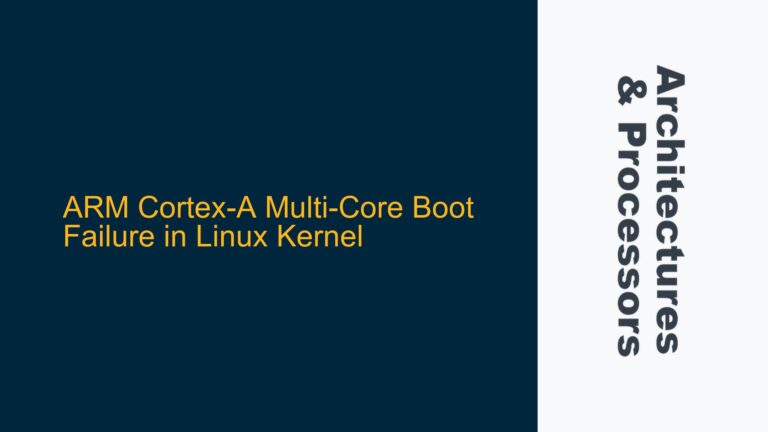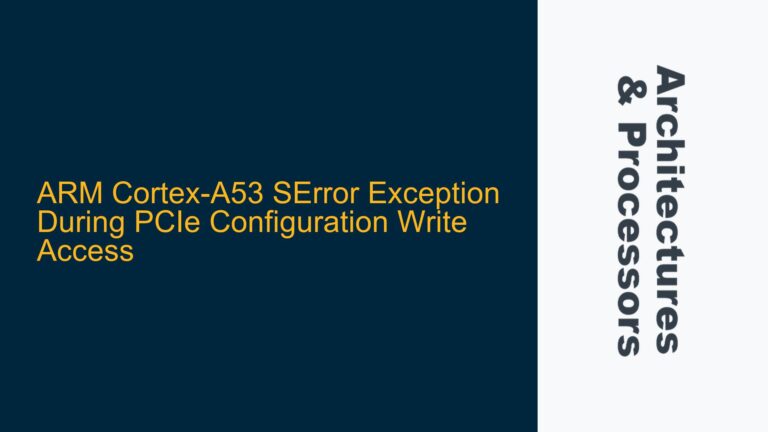ARM Cortex-M55 Cacheable Peripheral Region Configuration Challenges
The ARM Cortex-M55 processor introduces a highly configurable Memory Protection Unit (MPU) and cache architecture, enabling developers to define specific memory regions as cacheable. However, configuring a peripheral memory region (e.g., 0x40000000-0x40001000) as cacheable requires careful attention to MPU settings, cache enablement, and memory attribute configurations. A common issue arises when the cache does not appear to function as expected, leading to performance bottlenecks or incorrect data access patterns. This guide delves into the technical intricacies of configuring a cacheable peripheral region on the Cortex-M55, identifies potential pitfalls, and provides detailed troubleshooting steps to ensure proper cache operation.
MPU Configuration and Cache Attribute Mismatch
The Cortex-M55 MPU is responsible for defining memory regions and their attributes, including cacheability. The MPU configuration involves setting up the Memory Attribute Indirection Registers (MAIR) and the Region Base Address Register (RBAR) and Region Size and Enable Register (RSAR). A mismatch between the MAIR settings and the region attributes can result in the cache not being utilized as intended.
The MAIR registers define memory types and attributes, such as cacheability, write-back, write-through, and non-cacheable behavior. In the provided code snippet, the MAIR0 and MAIR1 registers are set to 0xFFFFFFFF, which configures all memory types as "normal memory, cacheable." However, this configuration does not explicitly define the cache policy (e.g., write-back or write-through) or ensure that the peripheral region is treated as cacheable.
Additionally, the RBAR and RSAR configuration must align with the MAIR settings. The RBAR specifies the base address of the region, while the RSAR defines the region size and enables the region. In the provided code, the region is configured with a base address of 0x40000000 and a size of 0x1000. However, the cacheability of the region depends on the MAIR attributes assigned to the region number (RNR). If the MAIR attributes do not match the intended cache behavior, the region may not be treated as cacheable.
Cache Enablement and Coherency Issues
Enabling the cache on the Cortex-M55 requires more than just calling a "cache_enable" function. The cache must be properly initialized, and coherency mechanisms must be in place to ensure that data accesses are consistent between the cache and the main memory. Without proper cache enablement and coherency management, the cache may appear to be inactive or may cause data corruption.
The Cortex-M55 features separate instruction and data caches, each of which must be enabled and configured independently. The cache enablement process typically involves setting the appropriate bits in the System Control Register (SCR) and configuring the cache control registers. If the cache is not fully enabled or if the cache control registers are misconfigured, the cache may not function as expected.
Cache coherency is another critical factor. When accessing a cacheable peripheral region, the processor must ensure that data written to the cache is properly flushed to the main memory and that data read from the main memory is correctly fetched into the cache. This requires the use of memory barriers and cache maintenance operations, such as Data Synchronization Barriers (DSB) and Instruction Synchronization Barriers (ISB). Without these operations, the cache may not reflect the current state of the main memory, leading to incorrect data access patterns.
Verifying Cache Activation and Performance Impact
To verify that the cache is activated and functioning as intended, developers can use performance counters, cache control registers, and debugging tools. Performance counters can provide insights into cache hits and misses, while cache control registers can indicate whether the cache is enabled and configured correctly. Debugging tools, such as ARM DS-5 or Keil MDK, can be used to monitor cache behavior and identify potential issues.
The Cortex-M55 provides several registers for monitoring cache performance, including the Cache Hit and Miss Counters (CHMC) and the Cache Control Register (CCR). By reading these registers, developers can determine whether the cache is being utilized and whether it is improving performance. Additionally, debugging tools can be used to trace cache accesses and identify any discrepancies between the expected and actual cache behavior.
If the cache is not functioning as expected, developers should review the MPU configuration, cache enablement process, and coherency mechanisms. By systematically verifying each component, developers can identify and resolve issues related to cache activation and performance.
Detailed Troubleshooting Steps and Solutions
Step 1: Verify MPU Configuration
The first step in troubleshooting cache issues is to verify the MPU configuration. Ensure that the MAIR registers are configured with the correct memory attributes and that the RBAR and RSAR settings align with the intended cache behavior. Use the following checklist to verify the MPU configuration:
- Check that the MAIR0 and MAIR1 registers are configured with the appropriate memory attributes for the cacheable region.
- Verify that the RBAR and RSAR settings define the correct base address and size for the cacheable region.
- Ensure that the region number (RNR) in the MPU configuration matches the intended cacheable region.
Step 2: Enable and Configure the Cache
Next, verify that the cache is properly enabled and configured. This involves setting the appropriate bits in the System Control Register (SCR) and configuring the cache control registers. Use the following steps to enable and configure the cache:
- Set the SCR bits to enable the instruction and data caches.
- Configure the cache control registers to define the cache policy (e.g., write-back or write-through).
- Use memory barriers (DSB and ISB) to ensure that cache operations are synchronized with memory accesses.
Step 3: Implement Cache Coherency Mechanisms
Cache coherency is critical for ensuring that data accesses are consistent between the cache and the main memory. Implement the following cache coherency mechanisms:
- Use Data Synchronization Barriers (DSB) to ensure that data written to the cache is flushed to the main memory.
- Use Instruction Synchronization Barriers (ISB) to ensure that data read from the main memory is fetched into the cache.
- Perform cache maintenance operations, such as cache invalidate and clean, to ensure that the cache reflects the current state of the main memory.
Step 4: Monitor Cache Performance
Finally, monitor cache performance to verify that the cache is functioning as intended. Use performance counters, cache control registers, and debugging tools to monitor cache behavior and identify potential issues. Follow these steps to monitor cache performance:
- Read the Cache Hit and Miss Counters (CHMC) to determine whether the cache is being utilized.
- Check the Cache Control Register (CCR) to verify that the cache is enabled and configured correctly.
- Use debugging tools to trace cache accesses and identify any discrepancies between the expected and actual cache behavior.
By following these troubleshooting steps, developers can identify and resolve issues related to cache configuration, enablement, and performance on the ARM Cortex-M55 processor. Properly configuring and managing the cache ensures optimal performance and reliable operation in embedded systems.
